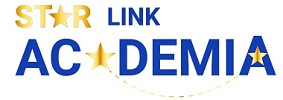1. The silent switch-over
On 1 January 2026 the Kenya Revenue Authority (KRA) will flip a switch.
The moment you press “Submit” on your 2025 income-tax return, iTax will no longer simply accept the numbers you type. Instead, it will race through three databases—TIMS/eTIMS invoices, withholding-tax certificates and customs entries—looking for proof of every shilling you declared. If the evidence is missing, the expense disappears, the profit balloons and a 100 % penalty lands on the extra tax.
In short, Kenya is moving from “self-assessment” to “real-time receipt matching” overnight.
2. Who is caught? Everyone who sells anything
The law does not ask how big you are; it asks only one question: “Are you carrying on a business?”
- The avocado vendor on a WhatsApp group
- The boda-boda spare-parts dealer in Kisii
- The freelance photographer invoicing corporates
- The mitumba stall moving five jackets a week
All must issue electronic tax invoices through eTIMS—no turnover threshold, no “I’m too small” clause.
3. “But my suppliers are even smaller…”
KRA anticipated the domino effect. If your mama mboga earns below KES 5 million a year and has no smartphone, you—the buyer—can generate the invoice on her behalf.
Welcome to the Buyer-Initiated Invoice (BII):
- Log into eCitizen → KRA Services → Buyer-Initiated Invoice.
- Key in the details; the system spits out an ETR number.
- Send the link; the supplier taps “Approve” with her PIN.
Cost: zero. Time: two minutes. Result: your purchase is instantly validated and will pass the January 2026 audit.
4. The short list of exceptions
Not every expense needs an e-invoice. The law excuses:
- PAYE employment income (use your P9)
- Bank interest and insurance premiums (certificates suffice)
- Import entries (the C-63 form covers you)
- Withholding-tax certificates already filed by the payer
- Depreciation, bad debts and statutory levies
Everything else—rent paid to a individual landlord, airtime for resale, nails, thread, data bundles, salon chemicals—must ride on an e-invoice or it will be disallowed.
5. What happens if you shrug and hope?
Disallowed expenses → higher taxable profit → bigger tax bill.
Then comes Section 86: a penal tax equal to twice the tax you tried to save.
Crunch the numbers: understate profit by KES 1 million, pay an extra KES 300 k in tax plus KES 300 k penalty, then 1 % monthly interest. A single omission can wipe out an entire year’s margin.
6. Six moves to sleep easy in 2026
- Register on eTIMS today—smartphone app or USSD *222#.
- Download your 2024 annual TIMS schedule; highlight every missing purchase.
- WhatsApp former suppliers and create Buyer-Initiated Invoices for anything above KES 1 000 while they still remember you.
- Upgrade your invoice habit: issue an ETR for every sale, however small; your customers will soon demand it anyway.
- Reconcile your accounting software to TIMS figures monthly, not December 2025.
- Keep PDFs and hard copies of every ETR; auditors can knock five years later.
7. The bigger picture
KRA is not trying to punish businesses; it is closing the honesty gap that keeps Kenya’s tax-to-GDP ratio stuck at 14 %. Electronic receipts starve the black market, level the playing field and—over time—could even lower tax rates because the base is wider.
8. Final word
There is no “wait and see” option. The businesses that weave eTIMS into their daily routine in 2025 will file their 2025 returns in June 2026 with a yawn and a smile. The ones that don’t will discover that Ctrl+Z does not work on a KRA penalty.
Start now. Issue that first e-invoice today. Your future self—and your bank balance—will thank you.
